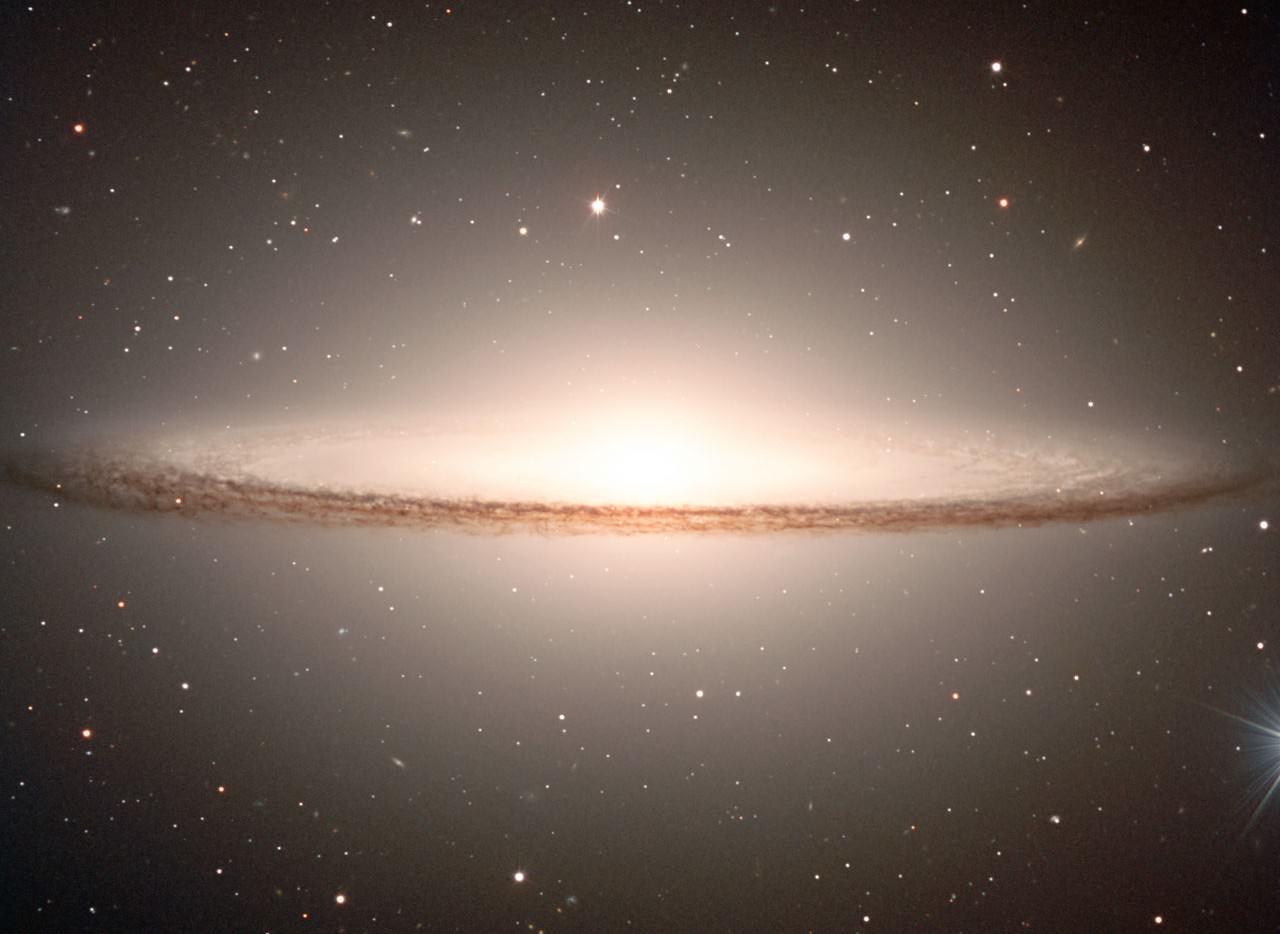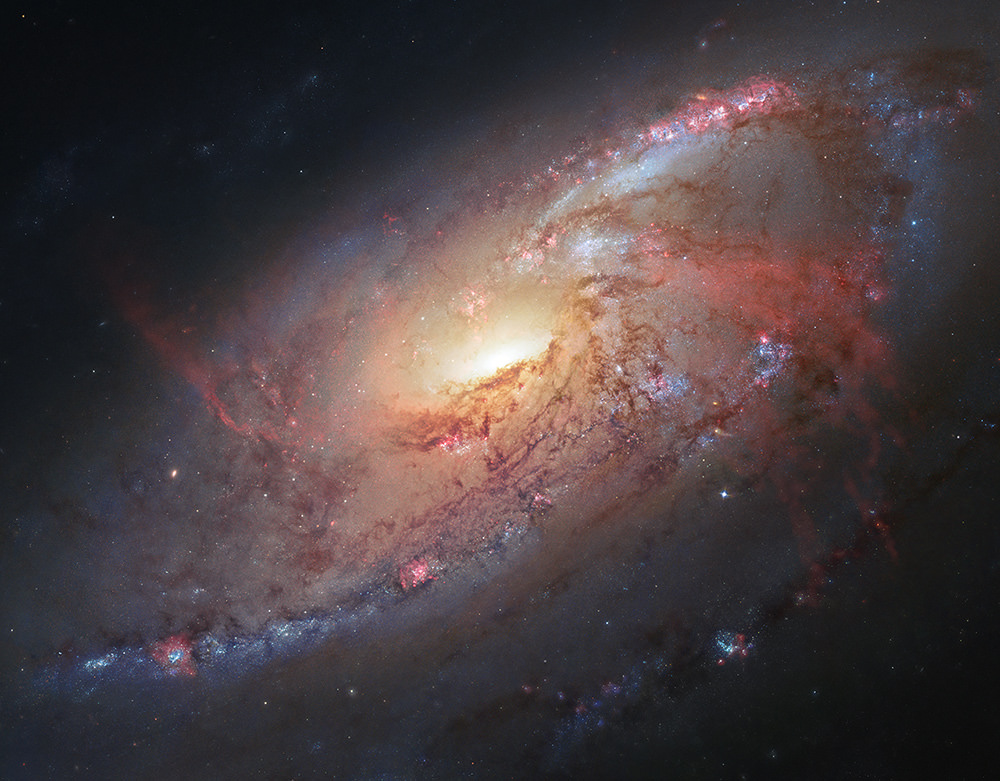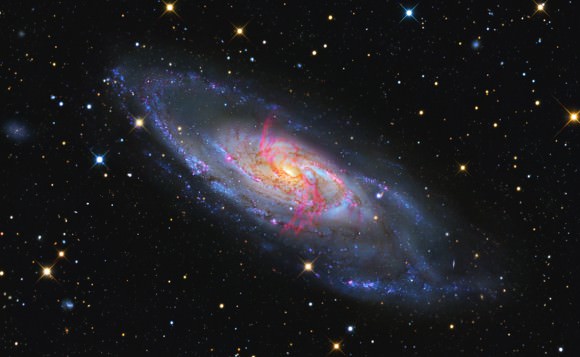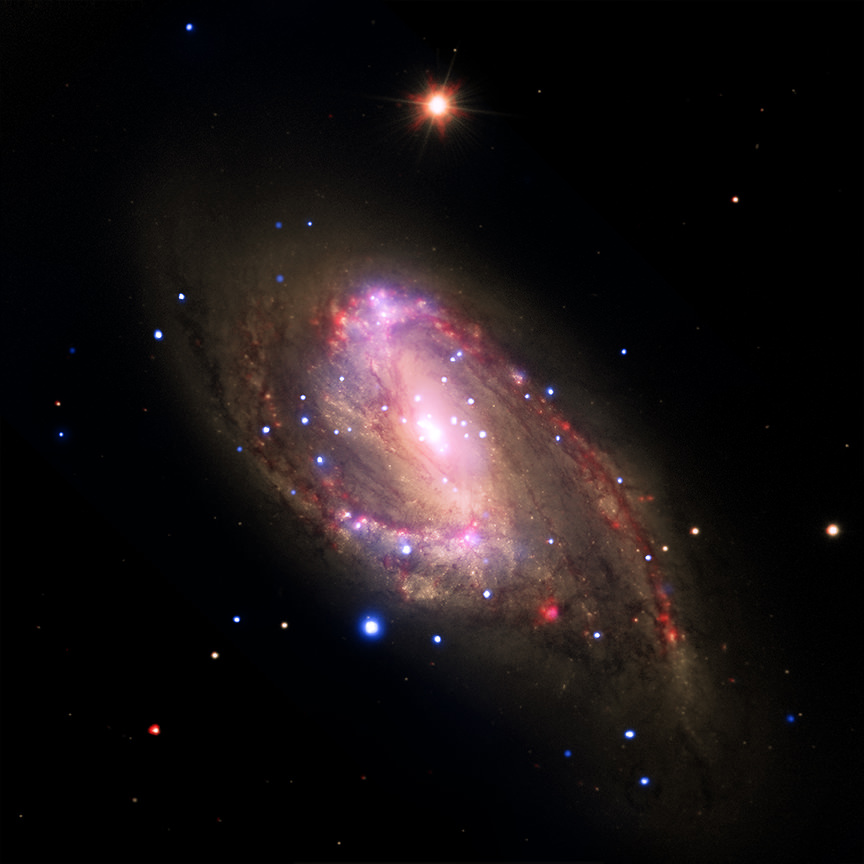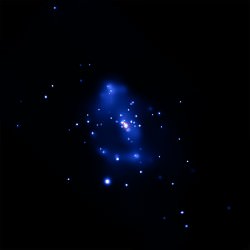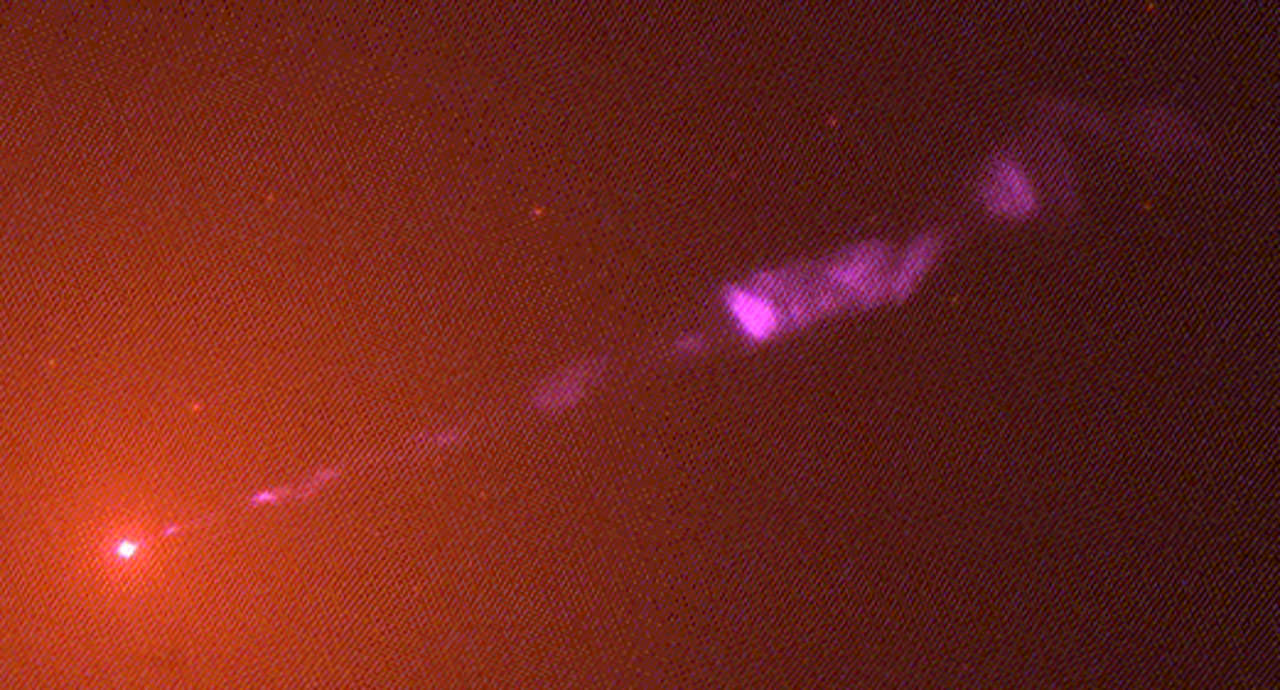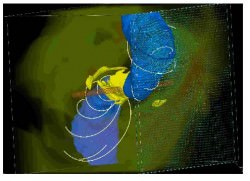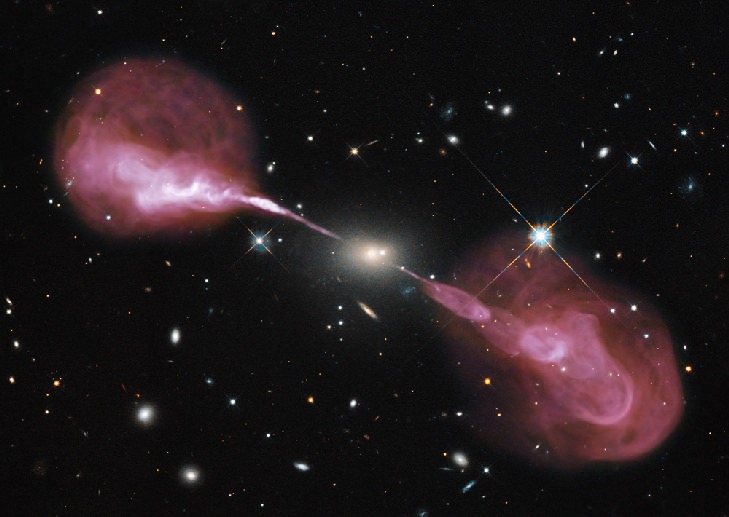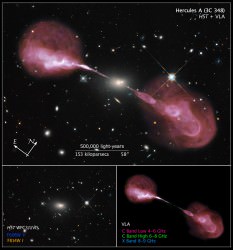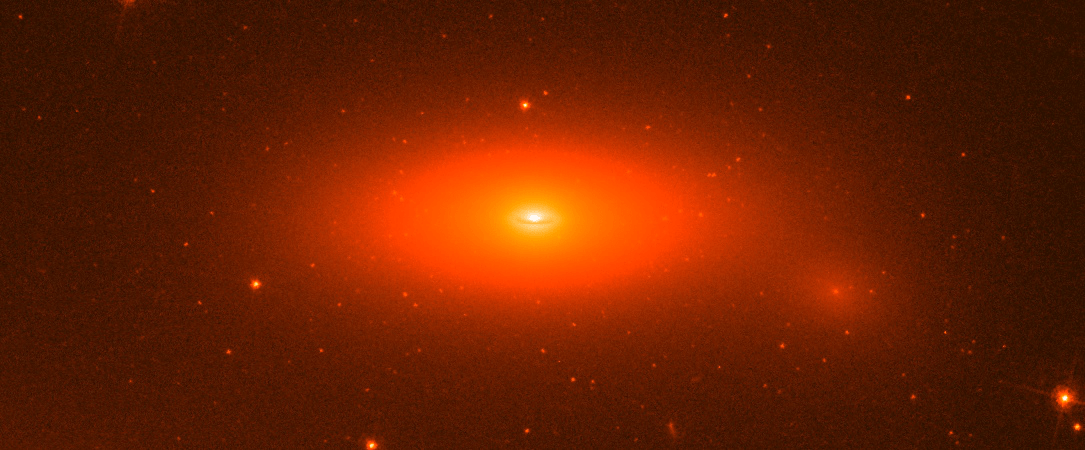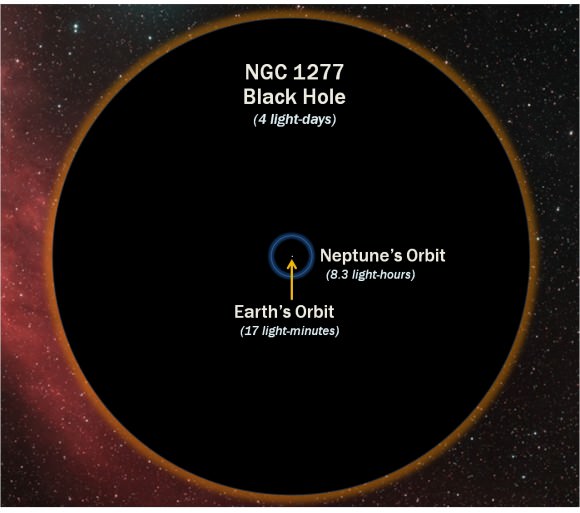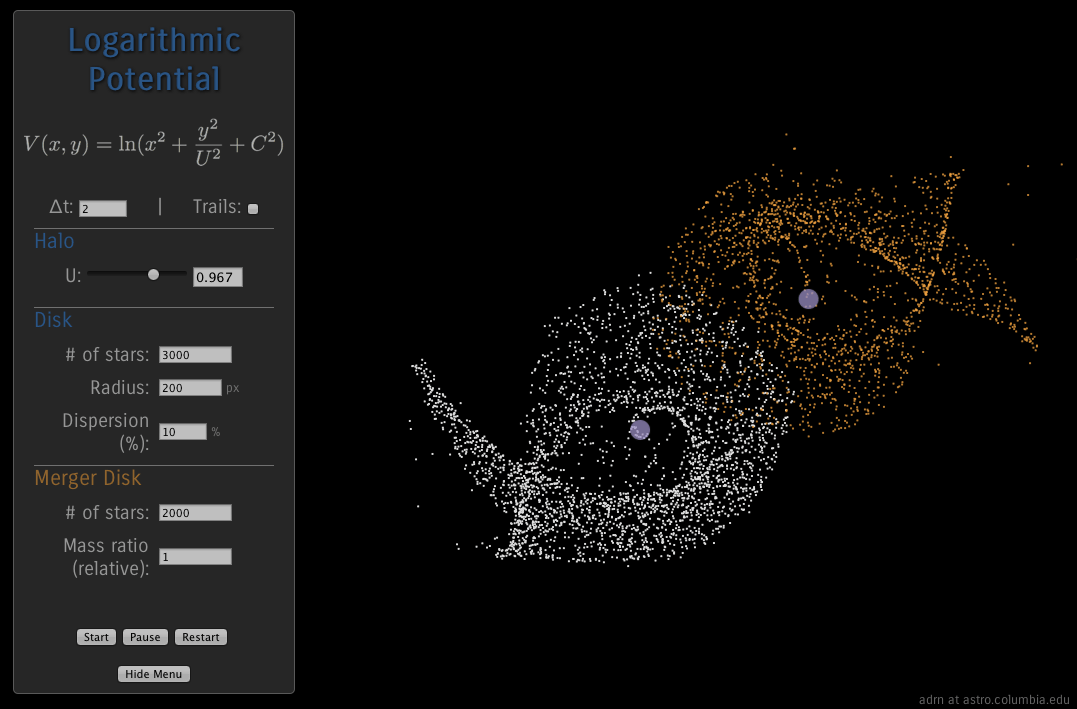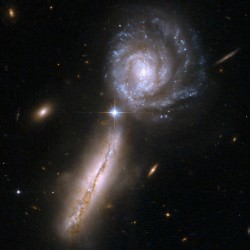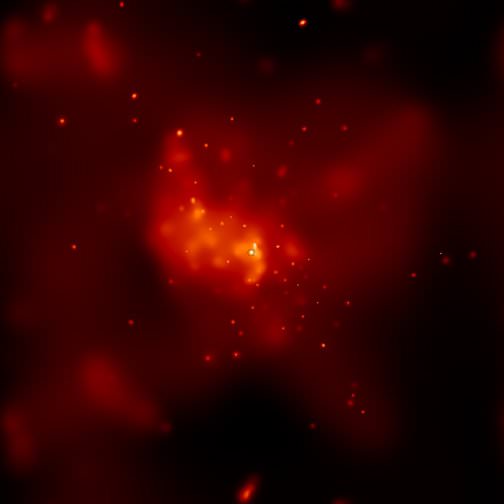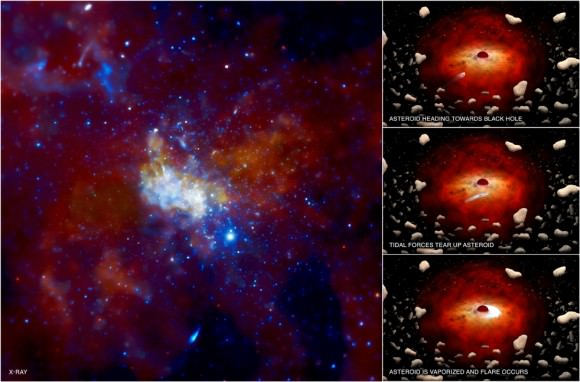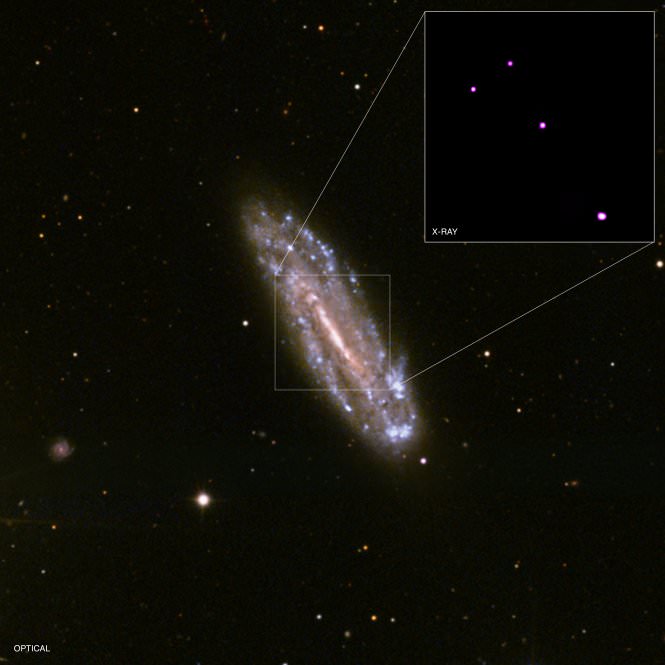The heart of our Milky Way galaxy is an exotic place. It’s swarming with gigantic stars, showered by lethal blasts of high-energy radiation and a veritable cul-de-sac for the most enigmatic stellar corpses known to science: black holes. And at the center of the whole mélange is the granddaddy of all the black holes in the galaxy — Sagittarius A*, a supermassive monster with 4 million times more mass than the Sun packed into an area smaller than the orbit of Mercury.
Sgr A* dominates the core of the Milky Way with its powerful gravity, trapping giant stars into breakneck orbits and actively feeding on anything that comes close enough. Recently astronomers have been watching the movement of a large cloud of gas that’s caught in the pull of Sgr A* — they’re eager to see what exactly will happen once the cloud (designated G2) enters the black hole’s dining room… it will, in essence, be the first time anyone watches a black hole eat.
But before the dinner bell rings — estimated to be sometime this September — the cloud still has to cover a lot of space. Some scientists are now suggesting that G2’s trip through the crowded galactic nucleus could highlight the locations of other smaller black holes in the area, revealing their hiding places as it passes.
In a new paper titled “G2 can Illuminate the Black Hole Population near the Galactic Center” researchers from Columbia University in New York City and the Harvard-Smithsonian Center for Astrophysics (CfA) in Cambridge, Massachusetts propose that G2, a cloud of cool ionized gas over three times more massive than Earth, will likely encounter both neutron stars and other black holes on its way around (and/or into) SMBH Sgr A*.
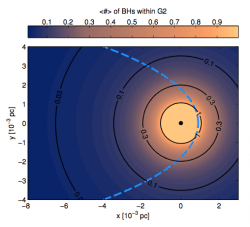
The team notes that there are estimated to be around 20,000 stellar-mass black holes and about as many neutron stars in the central parsec of the galaxy. (A parsec is equal to 3.26 light-years, or 30.9 trillion km. In astronomical scale it’s just over 3/4 the way to the nearest star from the Sun.) In addition there may also be an unknown number of intermediate-mass black holes lurking within the same area.
These ultra-dense stellar remains are drawn to the center region of the galaxy due to the effects of dynamical friction — drag, if you will — as they move through the interstellar material.
Of course, unless black holes are feeding and actively throwing out excess gobs of hot energy and matter due to their sloppy eating habits, they are very nearly impossible to find. But as G2 is observed moving along its elliptical path toward Sgr A*, it could very well encounter a small number of stellar- and intermediate-mass black holes and neutron stars. According to the research team, such interactions may be visible with X-ray spotting spacecraft like NASA’s Chandra and NuSTAR.
Read more: Chandra Stares Deep Into the Heart of Sagittarius A*
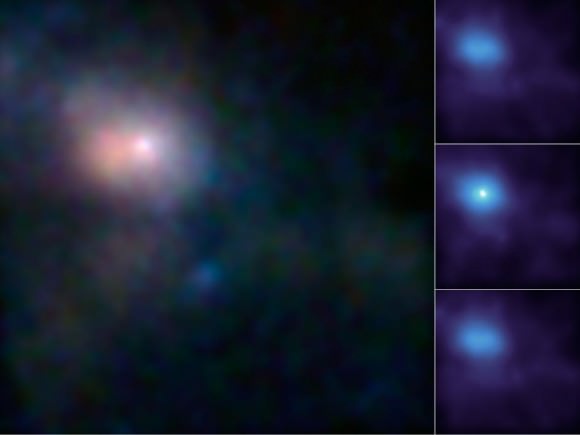
The chances of G2 encountering black holes and interacting with them in such a way as to produce bright enough x-ray flares that can be detected depends upon a lot of variables, like the angles of interaction, the relative velocities of the gas cloud and black holes, the resulting accretion rates of in-falling cloud matter, and the temperature of the accretion material. In addition, any observations must be made at the right time and for long enough a duration to capture an interaction (or possibly multiple interactions simultaneously) yet also be able to discern them from any background X-ray sources.
Still, according to the researchers such observations would be important as they could provide valuable information on galactic evolution, and shed further insight into the behavior of black holes.
Read the full report here, and watch an ESO news video about the anticipated behavior of the G2 gas cloud around the SMBH Sgr A* below:
This research was conducted by Imre Bartos, Zoltán Haiman, and Bence Kocsis of Columbia University and Szabolcs Márka of the Harvard-Smithsonian Center for Astrophysics.


